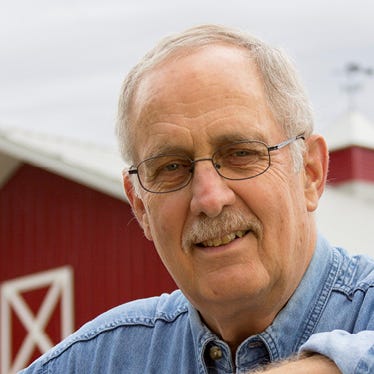February 14, 2018

There’s a pretty good chance you believe rural Indiana is a great place to live. And by many measures, you’re right!
But there’s a problem in rural Indiana that not many people have talked about until recently. Opioid addiction has crept into Indiana and other Midwestern states. It’s killing many young people through overdoses, overwhelming state social services infrastructure and overflowing county jails.
It’s become a crisis severe enough that Indiana AgriInstitute, a training ground for the state’s future ag leaders, recently hosted a symposium to address opioid addiction. It was a standing-room-only event, attended by not only ag leaders and farmers, but also mental health professionals, law enforcement, state officials, a U.S. senator and others — all putting their heads together to address the crisis.
“This enemy has visited too many Indiana homes and communities and knows no demographic bounds,” said Lt. Gov. Suzanne Crouch. Crouch is also Indiana’s secretary of agriculture. “Rural Indiana is particularly at risk because we have lower levels of income, higher levels of pain prescriptions and a lack of appropriate treatment facilities.”
Origins and directions
Sam Quionones, author of the book “Dreamland: The True Tale of America’s Opiate Epidemic,” says the problem’s roots trace back to the 1980s. A new crop of well-meaning young doctors sought to relieve widespread pain using opioid painkillers. Pharmaceutical companies eagerly jumped on board and assured the public that addiction wouldn’t be a problem. But many people did become addicted to prescription medications. Then many of them switched to cheaper alternatives, like heroin, smuggled in from Mexico and Colombia. Residents of Midwestern rust belt states, where unemployment and despair were both in ample supply, became key targets for people engaging in black market activities.
Anne Hazlett, former Indiana State Department of Agriculture director, echoed the comments of several presenters at the symposium, saying there is “no silver bullet” for the way out of the crisis. Rather it’s a matter of “silver buckshot”— a multifaceted approach that includes such strategies as people getting their heads out of the sand, recognizing we can’t “arrest our way out of the problem,” changing attitudes to de-stigmatize addictions, improving access to treatment, encouraging wider use of needle-exchange programs, rebuilding a sense of community and being a good neighbor to the people around you.
AFBF, NFU join forces
To address the opioid crisis in rural America, the nation’s two largest general farm organizations, the American Farm Bureau Federation and the National Farmers Union, recently teamed up to create a new campaign, “Farm Town Strong.”
The goal is to raise awareness of the crisis’ impact on farming communities. The campaign will provide resources and information to help struggling farm communities and encourage farmer-to-farmer support to overcome the crisis. To learn more, visit farmtownstrong.org.
Boone writes from Wabash, Ind.
About the Author(s)
You May Also Like






